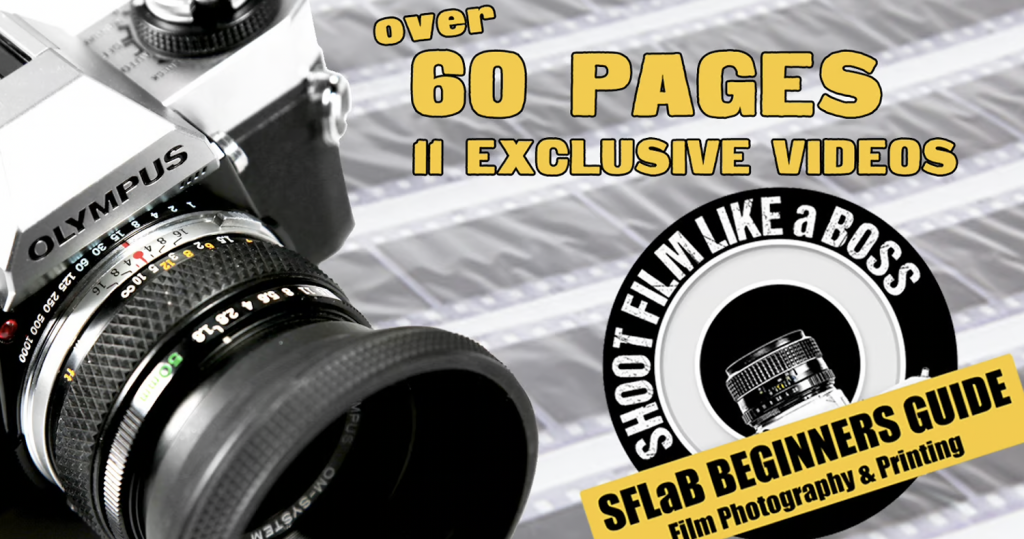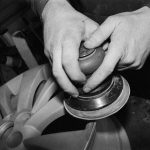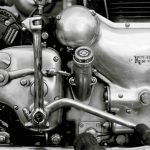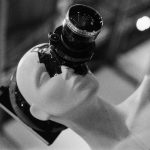Kodak Model D 1946 – 1957 620 Film Camera:
Thanks to my friend Gary Geezer for sending me this camera and film. Gary is a creative “nude and boudoir photographer in London. Check out Gary’s Instagram
A Review
The Kodak Model D 1946 – 1957 620 film camera is a classic box camera that was produced by Kodak in England for over a decade. It is a simple and easy-to-use camera that takes 620 film, which produces 2 1/4 x 3 1/4 inch negatives (6×9). Or a tad bit smaller if you actually measure the back.
The Model D has a single-blade shutter with two speeds: B (bulb) and I (instantaneous). And the speed of the camera is just 1/40th of a second, or there about! Which makes it difficult in some situations to hold and keep steady. I found that by using a strap I can pull the camera tight around my neck to steady it more in the hand.
The shutter mechanism is surprisingly simple.

The lens is a meniscus f/11 100mm lens with a portrait lens attachment which is covers the back of the lens when you pull the slider out. This allows you to take portraits within a 3 to 6 feet range. I found 5-6 feet to be best for sharpness. You can see the close up lens half way across in the image below. Also the slider that pulls the close up lens across and the switch between Bulb mode and instantaneous.


The camera also has two viewfinders. One for portrait and another for landscape. And these are very bright! They work using the two view finder lenses and if you remove the front panel you can see the mirrors.


The Model D is a well-made camera with a metal body and a grained imitation leather covering. It is also relatively compact and lightweight, making it easy to carry around.
How the Kodak Model D was made
The Kodak Model D was made using a variety of manufacturing techniques, including:
- Stamping: Metal parts for the camera body were stamped out using dies.
- Casting: Metal parts such as the lens mount and shutter were cast.
- Machining: Metal parts such as the winding knob and shutter release button were machined on lathes and milling machines.
- Assembly: The various parts of the camera were assembled by hand.
The Kodak Model D was a relatively simple camera to manufacture, but the quality of construction was high. The camera was also very affordable, making it accessible to a wide range of consumers.
Who the Kodak Model D was meant to be used by
The Brownie Cameras were for anyone to use back in the day. And the large negatives were made as contact prints (6×9) which were often put in family albums. You have probably see these albums and prints in antique shops. I intend to do just that with my collection of Brownie Negatives.
It was designed to be a simple and easy-to-use camera for anyone who wanted to take pictures. It was particularly popular with families and amateur photographers.
The Kodak Model D was a popular camera for many years, and it is still used by some people today. It is a classic camera that is known for its simplicity, durability, and affordability.
Loading the Camera
The camera takes 620 Film. You can still get 620 Film today but only from specialist suppliers that roll your regular 120 films onto the 620 spool. 120 Film will not fit into this camera but you can do some DIY and cut the 120 film spool to size, and it’s easy to do.
The main difference is the circumference of the spool ends. 610 is slightly smaller but with scissors you can easily cut away the excess to fit 120 Film into the camera.
The original 620 spools were metal and are quite popular today. You usually can find one still in the original camera but if not you can easily get these online.



So you would use the metal spools as the take up.
To load the film you take the Film Unit out of the Camera.

And load your adjusted 120 film onto the side that says “Key Side”.


And pull the film over the rollers onto the metal take up spools.

“Key Side” is the notch that allows the advance knob to advance the film. It’s easy to do. And once your Film Unit is back inside the camera, push the advance knob in to secure the unit and also to catch onto the 120 spool. From there you make sure it is pulling the film tight and then close the back of the camera and continue to frame number 1. You get 8 shots.

You can tape over the red window if you are worried about fogging the film inside but I never have and never had any leaks from it.
The only leaks you will possibly get is when you take the film out of the camera because you have trimmed the edges. Just make sure you load and remove in subdued light.
The camera appears to be very secure from internal light leaks.
Shooting the Camera
As the camera is 1/40th and F11 I use a 100 speed film inside the camera on sunny days. If it is too bright you may get over exposed negatives but only a couple of stops which isn’t hard to deal with. But light overcast days it is perfect.
With the single meniscus lens anything over 10 feet will be in focus. With the close up lens pulled out you will be able to shoot nice portraits between 3 and 6 feet, but I like to be around 5 feet for close ups.
Sample Images
Here are photographs I have taken with the camera so far.
Ferrania P30 Film. ( I got my friend Gaz to dress up!)
Accidental Double Exposure!
I found that if you advance the film straight after exposure and get into that habit you won’t double expose by mistake.

Ilford XP2
Not bad are they! For a camera that is so basic.
Cheers Guy’s!














